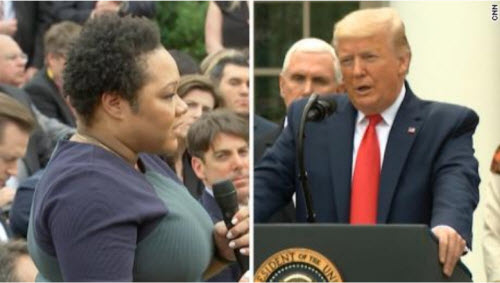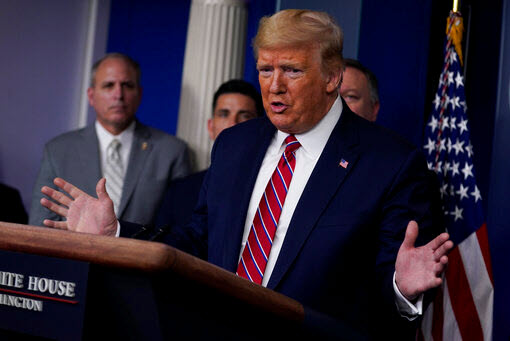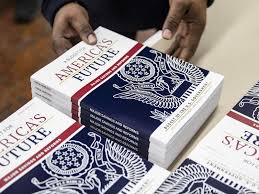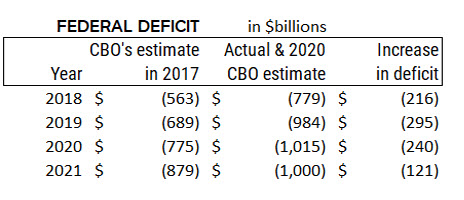With the coronavirus raging in China, the entire city of Wuhan cordoned off one week before, President Trump on January 31 blocked entry of Chinese nationals into this country and had Americans returning from China quarantined, a single act that may well have saved the spread of this highly communicable disease to thousands.
Trump being Trump, he congratulated himself, claiming without evidence that there was widespread opposition to the idea and that it was done “against the advice of a lot of great professionals” in his administration. “Everybody said, ‘It’s too early, it’s too soon,’ and good people, brilliant people, said, ‘Don’t do it. And I thought it was a wise thing to do.”
After that, nothing
Not until six weeks later, in mid-March, did Trump realize that the health of the nation should take priority. Flanked by Vice President Pence and a number of corporate CEOs from the health industry, he declared in the Rose Garden a national emergency and granted the head of the Health and Human Services (HHS), Alex Azar, powers to suspend a list of regulations that have hindered response to the coronavirus.
Two days earlier, the president had given a speech to the nation from the Oval Office that needed several corrections just minutes after delivery. He had said, giving two days notice, that all people and all goods from Europe were to be banned from entry into this country; it would have stranded Americans abroad and shut down trade, a specter that caused markets overseas to crash.
Until this point Mr. Trump had been preoccupied with the gyrations of the stock market and the threat to the booming economy so important to his re-election (see companion story). The result of inattention is that testing for the virus is barely underway. Unlike other nations around the globe that are testing thousands — 10,000 a day in South Korea — the United States has no idea how many cases there are in the nation.
The Buck Doesn’t Stop Here Anymore
Dr. Anthony Fauci, the head of infectious diseases at the National Institutes of Health, said before Congress earlier this week:
“The system does not, is not really geared to what we need right now, what you are asking for. That is a failing. It is a failing. Let’s admit it. The idea of anybody getting [tested] easily the way people in other countries are doing it, we’re not set up for that. Do I think we should be? Yes. But we’re not.”
At the Rose Garden gathering, NBC News’ Kristen Welker quoted Dr. Fauci calling government performance a “failing” and asked the president, “Do you take responsibility
for that?” His answer:
“No, I don’t take responsibility at all because we were given a set of circumstances and we were given rules, regulations and specifications from a different time”.
More on those supposed rules later, but this is a president who has had three years to change whatever regulations were an impediment in a health emergency, and who has stuck down scores of other regulations in behalf of corporate America.
In all the weeks between the first cases on our shores in late January and the middle of March, how did it go so wrong?
shrink the government
For years now there have been mounting concerns that disease pandemic would someday be inevitable. Population expansion puts humans in closer contact with other species as we encroach on animal habitat; profligate feeding of antibiotics to livestock is teaching microbes to outmaneuver drugs; the rapid mutation of microbes is outrunning drug development. What preventive action was the nation taking?
Following the extraordinary success preventing Ebola in this country, the Obama White House set up in 2014 the global health security office as part of the National Security Council. Its job, in the words of Beth Cameron, who ran it, was “to do everything possible within the vast powers and resources of the U.S. government to prepare for the next disease outbreak and prevent it from becoming an epidemic or pandemic”.
Trump came to government under the influence of Steve Bannon, who brashly advocated the deconstruction of the administrative state. That resonated with the new president, who had expressed confidence he could run both the country and the Trump Organization at the same time; he thought government bloated and ordered that its departments be stripped — a 30% reduction of the State Department, for example.
In keeping with Trump dismantling everything else Obama had accomplished, certainly the pandemic prevention unit had to go, so then-National Security Adviser John Bolton got rid of it.

Alcindor asks Trump a “nasty” question.
NPR’s Yamiche Alcindor asked the president at the Rose Garden event why he had closed that office adding, “the White House lost valuable time because that office was disbanded…What responsibility do you take to that?” Trump answered:
Well, I just think it’s a nasty question because what we’ve done and Tony has said numerous times we’ve saved thousands of lives because of the quick closing and when you say me, I didn’t do it. We have a group of people…I could perhaps ask Tony about that because I don’t know anything about it”.
He turned to ask Tony, Dr. Fauci of the National Institute of Health located in Bethesda, Maryland, about the disbanding of a team that worked at his own White House.
That team, continually in place, as Obama had directed, would have had plans to execute Day #1, with a communications network in place connecting healthcare professionals, knowledge of hospital capacities, and — if supported by a farsighted president — congressionally authorized expenditures for stockpiles of needed supplies. Instead, we have pharmacies long since sold out of even rudimentary masks that we see worn universally in other countries, and looming shortages of N95-grade mask, latex gloves, and gowns needed by medical personnel, and the vital ventilators that assist breathing for the seriously ill.
the cdc falters
Patient samples for testing were originally to be sent to the Center for Disease Control and Prevention (CDC) in Atlanta, an awkward arrangement that cost two-to-three days of turnaround. Better would be testing kits to enable state labs to do their own testing. Such kits had been developed in China and other countries. The one developed at a lab in Germany was endorsed by the World Health Organization. Perhaps betraying a not-invented-here attitude at the CDC, an outfit otherwise heralded as a gold standard the world over, the CDC declined to use the German kit and created its own, only to learn that flaws were discovered in the original shipments. Each kit had the capacity to test 700 to 800 specimens from patients, the agency said, but one of its three ingredients was causing “inconclusive” readings.
Even the CDC had to get “emergency use authorization” from the Food and Drug Administration (FDA) to devise and distribute its kit, a policy meant to control quality, but which prevented hospitals and labs from developing kits in house, short of making their own complicated applications to the FDA in the midst of a public health emergency. Moreover, strict rules restricted who could qualify for testing. When the CDC faltered, the rules were not relaxed. The CDC even reminded hospitals that they should not develop their own tests without an “emergency use authorization” from the FDA. Scott Gottlieb, head of the FDA until a year ago, tweeted at the beginning of February:
“Since CDC and FDA haven’t authorized public health or hospitals to run the tests, right now #CDC is the only place that can. So, screening has to be rationed”
A modified CDC kit with only two of its ingredients was cleared for use by the FDA near the end of February. Coronavirus in the U.S. could finally be proven.
Not until February 29th did the FDA relax its rules to allow hospitals and labs to develop their own tests. Companies can seek FDA authorization after the fact, submitting details of their test within 15 days mof first use.
A week into March, the nation was playing catch-up. Six weeks lost. The virus got a head start, with no knowledge of how far Covid-19 (the preferred name of the specific pathogen because “corona” is a virus family) has already spread for lack of tests to find out. Scott Becker, head of the Association of Public Health Laboratories, knows best. He said to The New York Times:
“We’ve seen major progress with essentially the lights coming on across the country. We’re absolutely a few weeks behind where we should be. There is no way you can sugarcoat that.”
Integrated DNA Technologies, a commercial test manufacturer working with CDC, has now shipped tests enough to administer to 700,000 people. The major labs — Quest Diagnostics and LabCorp — are ready to ship their versions. Four million more are to be shipped the week this is written, says the administration. “We’re going to need millions and millions and millions of tests,” said Dr. Anthony Fauci, head of the National Institute of Allergy and Infectious Diseases, in a CNN Town Hall. In contrast, Trump was misleading the public promising,
“Anybody right now and yesterday, anybody that needs a test gets a test. They’re there. They have the tests and the tests are beautiful.”
Yes, he said “beautiful”. Pence said it would be a “matter of weeks” before Americans could get easy access. Labs report the ability to handle on average about 200 tests a day.
ship to shore radiating
The administration was justly faulted for other shortcomings. There was the inexplicable judgment of the State Department overriding the CDC’s advice when it loaded 328 passengers from the cruise ship Diamond Princess, quarantined in Japan, onto a flight along with other unexposed passengers. After a State Department pledge that no one with the virus would be allowed on board the plane, 14 tested positive.
The blunder was compounded when a whistleblower from Health and Human Services (HHS) reported that federal health workers had been “improperly deployed” to two military bases in California to greet and process without protective gear Americans who had been evacuated from Covid-19 hot zones. After exposure the health workers themselves were not quarantined to counteract the error. Staff members worried about exposure called it a “cover-up” that agency higher-ups downplayed the incident.
pound foolish
The administration’s disregard for preparedness to meet black swan events shows up in the president’s annual budgets. He has repeatedly tried to decrease funding of the CDC, essential for its infectious disease expertise, witness the defeat of the Ebola epidemic in 2014. In 2018, the CDC was forced to slash by 80% its program to prevent global disease outbreak for lack of funding. It had to reduce its focus to 10 countries and scale back the rest, including China.
What can be said about a proposed budget for fiscal 2021 (beginning October 1) that, in the face of a worldwide pandemic, includes a nearly 16% cut in funding for the CDC and a 10% cut of Health and Human Services, the umbrella department of which the CDC and the National Institutes of Health are subdivisions?
the new team
Rather than choosing a “czar” to oversee the health threat, as had Obama for Ebola, the president, thinking that some outside health expert might not be loyal — his primary test in a purge underway after impeachment — tapped Vice President Pence to run the defense against a pandemic. “He’s got a certain talent for this”, Trump said without irony at the White House briefing.
Pence brings complications to this assignment. As late as 2000, he argued that smoking doesn’t kill. In 2015 when governor of Indiana, he was faulted for his slow response when the state was struck with its worst HIV outbreak. In a federal government-funded inquiry, Yale University researchers found the epidemic could have been cut by 74% if Pence and state officials had acted faster. As cases spiked, Pence reportedly turned to prayer as the answer.
As soon as he took charge Pence ordered that all communication about the virus — no matter that they be from experts such as Fauci and Messionier — must first be cleared by his office. Fauci said he “was not muzzled”, but he did say that he had to get permission for a half-dozen pre-scheduled television appearances.
Then the vice president quickly announced that Deborah Birx, leader of U.S. efforts to fight HIV/AIDS around the world, would be the “White House Coronavirus Response Coordinator”. It was a well-regarded choice and first step.
the inevitable attack on obama
President Trump had been highly critical of President Obama for his handling of the Ebola threat in 2014. Think of how that threat was completely thwarted before it ever got off the ground and about Trump appointing Pence as you read his tweet from back then:
“Obama just appointed an Ebola Czar with zero experience in the medical area and zero experience in infectious disease control. A TOTAL JOKE! Obama should apologize to the American people and resign”
In what we have called the Obama psychodrama, in which Trump is in constant competition with the former president, he is now at it again, saying:
“The Obama administration made a decision on testing that turned out to be very detrimental to what we’re doing. And we undid that decision a few days ago so that the testing can take place in a much more accurate and rapid fashion. This was a very big move. It was something that we had to do and we did it very quickly. And now we have tremendous flexibility. Many, many more sites. Many, many more people. And you couldn’t have had that under the Obama rule, and we ended that rule very quickly.”
There was no “Obama rule”, only guidance, and that was withdrawn when Congress decided to draft legislation, which also never happened. This had to do with test development and FDA approval that was covered here earlier. As is his habit, Trump takes credit for success but shifts blame for failure elsewhere. He was briefed on the coming health threat by HHS Secretary Azar in late January, who reported that he had difficulty getting Trump to focus his attention (he switched the subject to e-cigarettes).
The administration could have taken action weeks ago to allow hospitals and laboratories to develop their own tests and then submit them to the FDA for approval after-the-fact — within 15 days of first use, which is now the arrangement. Whereas South Korea has tested tens of thousands, the U.S. has just begun. We therefore have no idea how far the virus has spread, there are no announced test centers, people are walking into emergency rooms exposing those in waiting rooms — and worse — medical staffs, who then must be taken offline and quarantined for weeks.
Mar 15 2020 | Posted in
Healthcare |
Read More »





